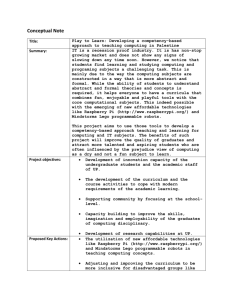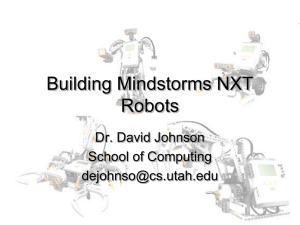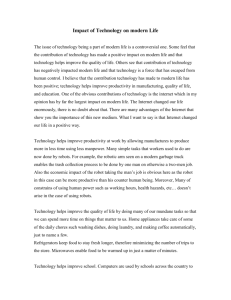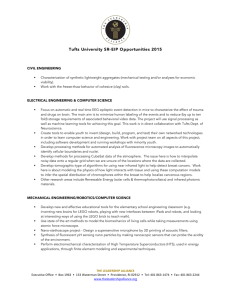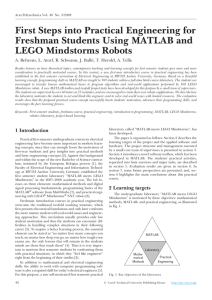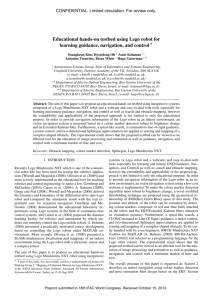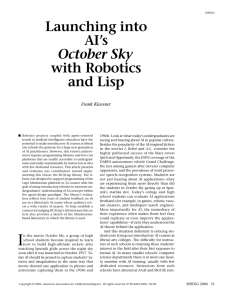Lego Robot Lesson Plan - E-Portfolio for Jack Opkins
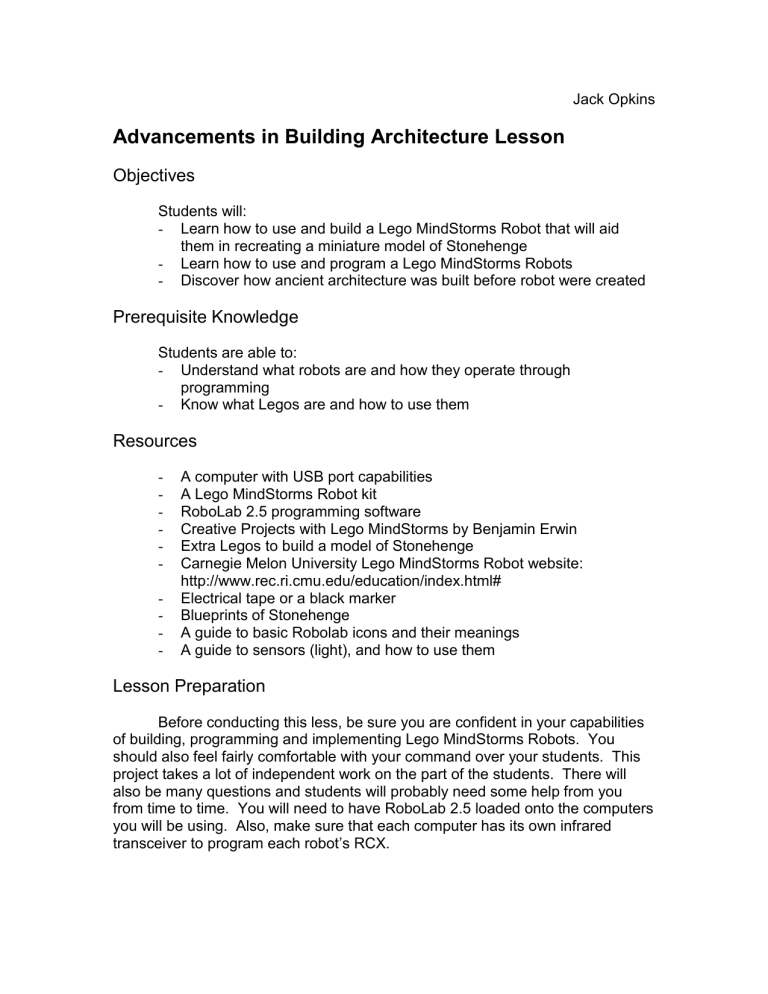
Jack Opkins
Advancements in Building Architecture Lesson
Objectives
Students will:
Learn how to use and build a Lego MindStorms Robot that will aid them in recreating a miniature model of Stonehenge
Learn how to use and program a Lego MindStorms Robots
Discover how ancient architecture was built before robot were created
Prerequisite Knowledge
Students are able to:
Understand what robots are and how they operate through programming
Know what Legos are and how to use them
Resources
A computer with USB port capabilities
A Lego MindStorms Robot kit
RoboLab 2.5 programming software
Creative Projects with Lego MindStorms by Benjamin Erwin
Extra Legos to build a model of Stonehenge
Carnegie Melon University Lego MindStorms Robot website: http://www.rec.ri.cmu.edu/education/index.html#
Electrical tape or a black marker
Blueprints of Stonehenge
A guide to basic Robolab icons and their meanings
A guide to sensors (light), and how to use them
Lesson Preparation
Before conducting this less, be sure you are confident in your capabilities of building, programming and implementing Lego MindStorms Robots. You should also feel fairly comfortable with your command over your students. This project takes a lot of independent work on the part of the students. There will also be many questions and students will probably need some help from you from time to time. You will need to have RoboLab 2.5 loaded onto the computers you will be using. Also, make sure that each computer has its own infrared transceiver to program each robot ’s RCX.
Lesson
I. Anticipatory Set – Show the students a picture of Stonehenge and briefly explain how it was built.
II. Objective – Given teacher input, the learner will be able to demonstrate an understanding of how materials were and are transported to create buildings by recreating the various means of transporting building materials using Legos and finally creating a Lego Mindstorm Robot depicting how transporting materials might be done today.
III. Purpose – You will need to know this in order to understand how man has progressed through the years using his ingenuity.
IV. Input
– The necessary information will include me presenting information about how man engineered new ways of transporting material. I will also teach the students how to create and programs
Lego Mindstorm Robots using the Robolab program.
V. Modeling – I will show them an example of a robot and a program that I have created to do a specific task I desired the robot to perform.
VI. Check for Understanding – I will have the students build and program their own robot to make sure they understand what to do. If they don’t understand then I will have to give the students more input in the form of programming and robot examples.
VII. Closure
– Explaining and modeling the map assignment to the students will serve as a bridge between the lesson and the independent practice.
VIII. Independent Practice
– The students will create and program a robot to transport building materials for them to build an ancient architectural structure, like a pyramid, or possibly Stonehenge.
Stonehenge
To drag the Saracen stones, weighing up to 45 tons, or the weight of six elephants, from Marlborough Downs, 30 KM to the south of Stonehenge, would have been quite a feat. The bluestones, in contrast, were about 4 tons but are believed to have come from much farther -- the Preseli Mountains nearly 385 KM away. Popular theory suggests the stones were rolled to the Welsh shore, carried on raft around the coast and into the River Avon, at Bristol. They would have then been transported through local rivers and then back to land, where they were once again rolled to Salisbury Plain.
The last feat of effort would have been the erection of the stones. It is believed that a foundation pit was dug in the chalky ground. Wooden stakes would have been pounded into the vertical side of the pit to stop the stone from digging into ground as it was being raised. The stone was moved forward with rollers toward a ramp, until the base of the rock was just sticking over the hole.
The outer end was then levered up; allowing the base to dip into the hole until the stone was balanced on a 30-degree angle. Gangs of about 100 men pulling on ropes then hauled it up. The lintels were raised to the top of the pillars by first being laid parallel to the base of the uprights. They were slowly lifted with the use of wooden levers and temporary timber platforms, which slowly raised the lintel to the top of the stones. But what is more interesting than how the lintels were raised is how they were made to fit to the upright Saracens. Mortice-and-tenon joints (still being used by carpenters today) were fitted by shaping one stone so that one part of the top of it protrudes out and fits into the hammered out slot in the other stone.
Conclusion
Now that the students have completed the lesson they will hopefully realize that robots make most tasks easier to manage and complete. This could create a possible segue into a follow up lesson on ethics or possibly even how robots could effect the economy, (possible ramifications of robots replacing humans in the workplace).
